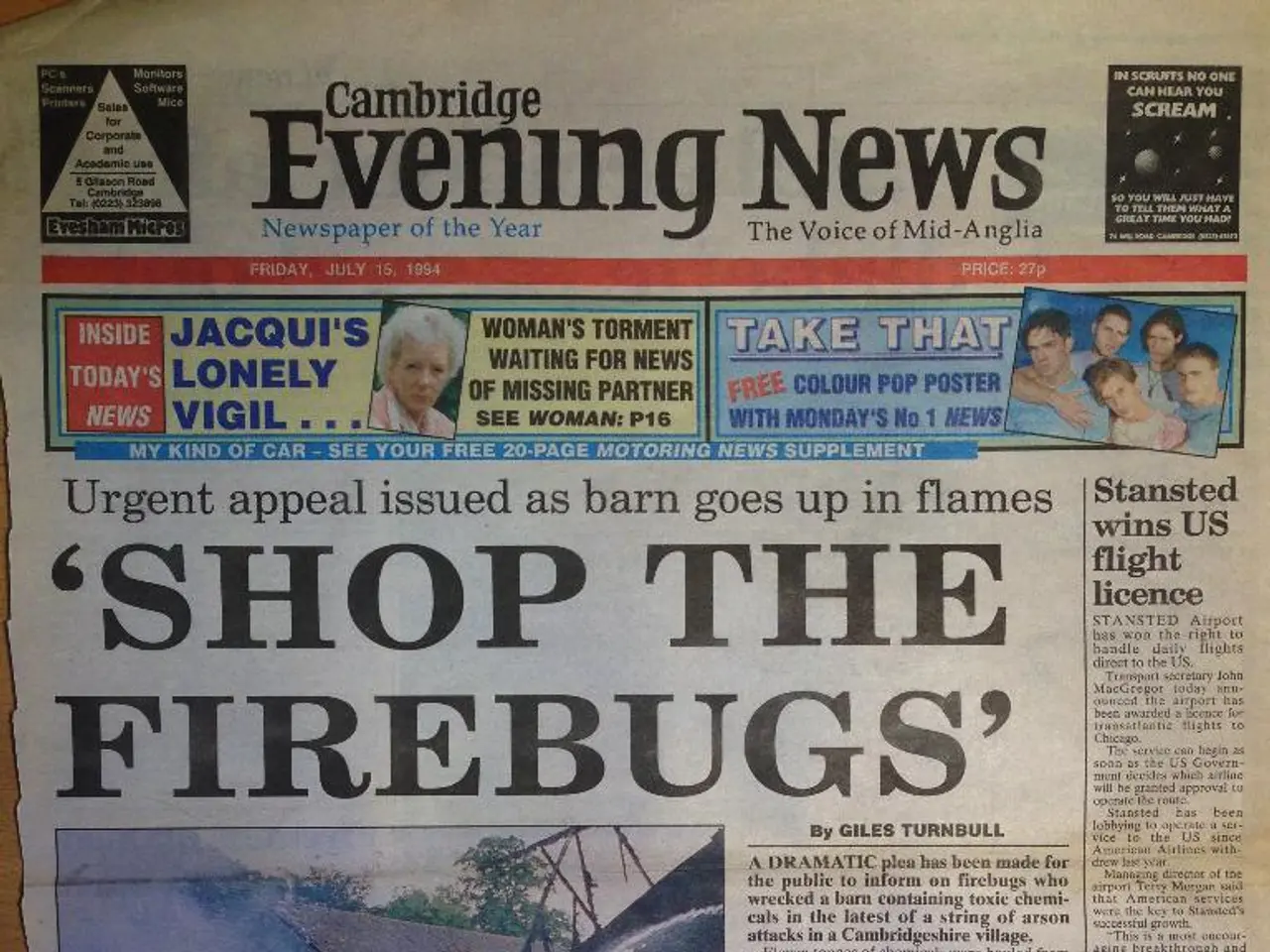Exceptional Study Aids for Scholars: Online Platforms and Additional Resources
Discover a wealth of educational resources for students with these top platforms offering age-appropriate news, articles, and perspectives suitable for classroom use and learning.
CBS Kids News
CBS Kids News offers current news stories tailored specifically for kids, featuring videos and articles on science, history, and current events suitable for younger audiences. The topics covered range from sports, gaming, and animals to politics and interactive quizzes. With a focus on making complex subjects accessible, CBS Kids News is a valuable tool for engaging young learners.
The Electric Typewriter
The Electric Typewriter is a resourceful site with essays, articles, and poetry often used for learning English and writing skills. This platform makes it beneficial for students practicing language arts, offering a wide range of materials suitable for different age groups and subjects.
The Sift
The Sift by Newsela is designed for educators and students, providing curated and scaffolded current events articles accompanied by discussion questions to promote critical thinking in middle and high school students. The Sift offers a weekly newsletter summarising topical articles in the news, debunking fake news, and providing ideas for lessons.
Science Journal for Kids and Teens
This site offers scientific articles targeted to younger readers, promoting scientific literacy with age-appropriate experiments, articles, and updates in science. The Science Journal for Kids and Teens provides a wealth of resources for students interested in science, technology, and health.
AllSides for Schools
AllSides for Schools focuses on presenting news articles from multiple perspectives to teach media literacy and help students understand bias and viewpoint diversity in current events. The platform offers downloadable lesson plans covering polarization and bias, using AI for civil discourse, and comparing bias across news outlets.
Additional Resources
Several other platforms offer valuable educational content for students. The New York Times Daily Lessons builds a classroom lesson around a new article each day, offering thoughtful questions for writing and discussion, as well as related ideas for further study. The NYT Learning Network provides an abundance of activities for students and resources for teachers, including the NYT Daily Lessons.
News for Kids presents U.S. and world news, science, sports, and the arts in a simplified manner for most readers, with tooltips for definitions and explanations. The CBS Kids News service, funded by the Canada Media Fund, provides daily news stories for kids in Canada and the United States.
Lastly, Youngzine focuses on climate science, solutions, and policies to address global warming, allowing kids to submit poetry or essays, and is compatible with Google Classroom.
These sites combine free access with some offering freemium models, where core content is free and additional features or deeper content might require subscriptions or teacher accounts. They are widely recommended for engaging and educational reading materials suitable for different student age groups and subjects.
[1] Educational websites for kids: https://www.commonsensemedia.org/education/top-rated-educational-websites-for-kids [3] Best free and freemium article websites for students: https://www.edutopia.org/article/best-free-and-freemium-article-websites-students
- Google Classroom can integrate various educational websites into classroom use, such as CBS Kids News, The Electric Typewriter, The Sift, Science Journal for Kids and Teens, and AllSides for Schools.
- The Sift provides scaffolded current events articles specifically designed for middle and high school students, facilitating critical thinking and media literacy.
- Science Journal for Kids and Teens offers scientific articles, experiments, and resources tailored to younger readers, fostering scientific literacy and curiosity.
- AllSides for Schools presents news articles from multiple perspectives, aiming to teach students about bias and viewpoint diversity in current events.
- Aside from these platforms, resources like The New York Times Daily Lessons, News for Kids, and Youngzine also offer age-appropriate, interactive, and thought-provoking content for students, further deepening their understanding.
- Professional development resources for teachers, like the ones offered by Edutopia, can help educators make the most of these sites and effectively implement them into their digital curriculum.
- Incorporating these online educational resources, like the ones discussed, along with e-learning platforms and tools, can contribute to a more engaging, comprehensive, and effective remote learning environment.




